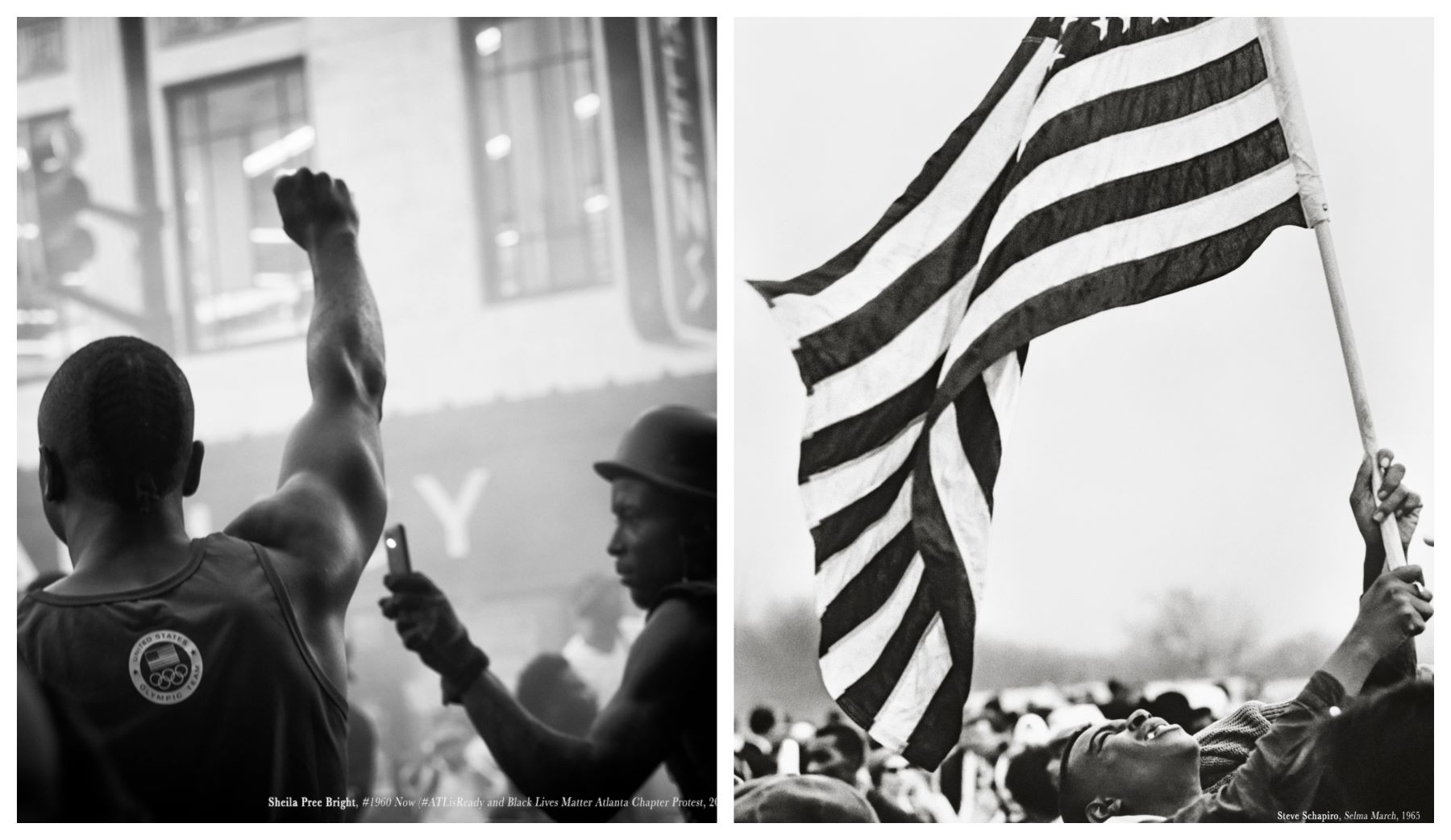Alicia Garza, founder of the international Black Lives Matter movement, has said “the civil rights movement was not one period in history but, in fact, several periods.” The struggle for equality began in the Jim Crow years around the turn of the 20th century and continues today.
With that in mind, Jackson Fine Art will exhibit collections from civil rights photographer Steve Schapiro and award-winning activist photographer Sheila Pree Bright side by side.
“City Lights” host Lois Reitzes spoke via Zoom with the photographers about their works and the differences and similarities they see in each other’s pieces.
Schapiro got his start in photography at a young age walking the streets of New York City. In 1961, he worked as a freelance photojournalist and shot photos for magazines like Life, Vanity Fair, Rolling Stone, Sports Illustrated, People, Newsweek, etc. He produced several photo essays — from narcotics addiction, to political protest, to presidential campaigns, to migrant workers.
Schapiro was first introduced to the civil rights movement in the South by way of James Baldwin.
“I had started freelancing for Life magazine in 1962 and asked if I could do an essay on Baldwin. They agreed, and he agreed. He came back from Paris, and we started traveling. He had a book tour throughout the South. We started traveling together in January of 1963. It was an enormous experience. I was a New Yorker who had not come in real contact with what was happening in the South. It was an introduction to both leaders in the South but also to the whole conditions that existed,” Schapiro said.
His exhibit “In Celebration of the Fire Next Time” is an illustrated volume of Baldwin’s classic text. One of the most powerful images Schapiro captured in his time as a freelancer was the motel room that Dr. Martin Luther King Jr. stayed in the day he was assassinated.
“I went to the Lorraine Hotel, and Hosea Williams let me into his hotel room. I saw on the ledge Dr. King’s attache case, and it had a number of things including a magazine called ‘Soul Force.’ In the room on the ledge were old Styrofoam cups, old rumpled shirts, and then a half-eaten sandwich. Then suddenly on the television, which was on that wall … behind the image of the announcer was the image of Dr. King. I photographed that all as one image, all three parts. And to me, it was very, very emotional in the sense that the physical man was gone forever, his material things remained … and yet, Dr. King hovered over us.”
Bright has been photographing civil unrest and protests since 2014 in Ferguson, Missouri. This was shortly after Michael Brown Jr., an 18-year-old Black man, was fatally shot by 28-year-old white Ferguson police officer Darren Wilson in a suburb of St. Louis.
She has followed the Black Lives Matter movement over the years and documented the protests in her book “#1960Now.”
“With me photographing in 2014 and being around the young people, they feel that they’re fighting the same fight their parents and grandparents are fighting. I feel that there is a very big difference now with George Floyd, and I see Generation Z. They are the ones that’s pushing the envelope for this because they’re wanting to hold people accountable, and they’re the most diverse generation in history,” Bright said.
Her photographs hang in the permanent collections of the Smithsonian National Museum of African American History and Culture in Washington, D.C., the High Museum of Art and the National Center for Civil Rights in Atlanta, and many others.
Both photographers will have their works juxtaposed next to one another at the Jackson gallery.
Bright feels that having the photographs side by side helps remind people of American history and how we cannot forget it.
“What I think that Steve’s photographs and my photographs [teach] is that we need to learn from generation to generation. Hopefully, and what I see in Generation Z, is that this … I’m not going to say won’t happen again, I think that it’s perpetual, but to keep it in the minds and hearts of people even though it’s traumatic to look at these images.”
The exhibit will be on view, by appointment only, Aug. 14 through Sept. 19.









